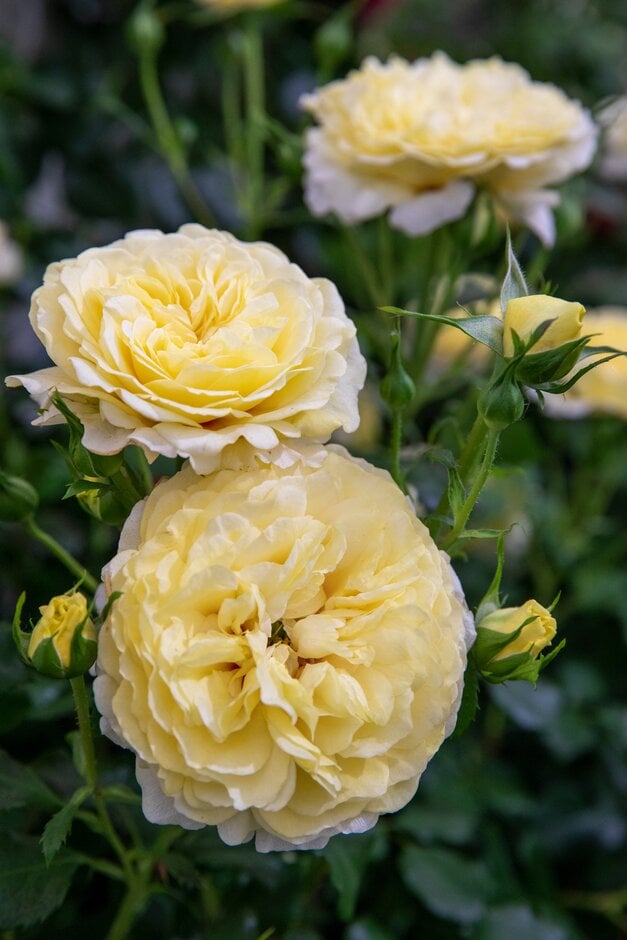Rosa 'Duke of Edinburgh' (HP)
rose 'Duke of Edinburgh'
A small, slightly spreading shrub to about 60cm tall, with healthy, oval-shaped green leaves. Large clusters of sweetly scented, semi-double bright scarlet to crimson-red flowers with white flecks appear on long stems blooming continuously from June through to September

Buy this plant
Size
Ultimate height
1–1.5 metresTime to ultimate height
2–5 yearsUltimate spread
0.5–1 metresGrowing conditions
Moisture
Moist but well–drained, Well–drainedpH
Acid, Alkaline, NeutralColour & scent
| Stem | Flower | Foliage | Fruit | |
| Spring | Green | |||
|---|---|---|---|---|
| Summer | Pink Red White | Green | ||
| Autumn | Green | |||
| Winter |
Position
- Full sun
Aspect
East–facing or South–facing or West–facing
Exposure
Sheltered Hardiness
H6Botanical details
- Family
- Rosaceae
- Native to GB / Ireland
- No
- Foliage
- Deciduous
- Habit
- Bushy
- Potentially harmful
- Fruit are ornamental - not to be eaten. Wear gloves and other protective equipment when handling. Pets: Fruit are ornamental - not to be eaten - see the HTA guide to potentially harmful plants for further information and useful contact numbers
- Genus
Rosa can be deciduous or semi-evergreen shrubs or scrambling climbers, with usually thorny stems bearing compound pinnate leaves and solitary or clustered flowers. Flowers may be followed by showy red or purple fruits in some varieties.
- Name status
Accepted
- Horticultural Group
- Hybrid Perpetual roses are bushy, upright shrubs with thorny stems, and fragrant, solitary or clustered, single or double flowers intermittently from summer to autumn
How to grow
Cultivation
Grows best in fertile, humus-rich, moist but well-drained soil in a sunny, open position, but will tolerate poorer soils. Mulch in late winter and, to improve flowering, apply a balanced fertiliser in late winter or early spring and again in early summer. See rose cultivation
Propagation
Propagate by semi-ripe cuttings in late summer or hardwood cuttings in autumn, or by T-budding in summer
Suggested planting locations and garden types
- City and courtyard gardens
- Cottage and informal garden
- Patio and container plants
- Cut flowers
- Flower borders and beds
Pruning
See pruning group 21 (shrub roses)
Pests
May be susceptible to aphids, including rose aphid, the most common rose pest. May also be susceptible to rose leafhopper, glasshouse red spider mite, scale insects, caterpillars, large rose sawfly, rose leaf-rolling sawfly and leaf-cutter bees. Deer and rabbits can also cause damage
Diseases
May be susceptible to rose black spot, rose rust, rose powdery mildews, which are the most common rose diseases. May also be susceptible to rose dieback, replant disease, a canker, a virus and sometimes honey fungus
Get involved
The Royal Horticultural Society is the UK’s leading gardening charity. We aim to enrich everyone’s life through plants, and make the UK a greener and more beautiful place.